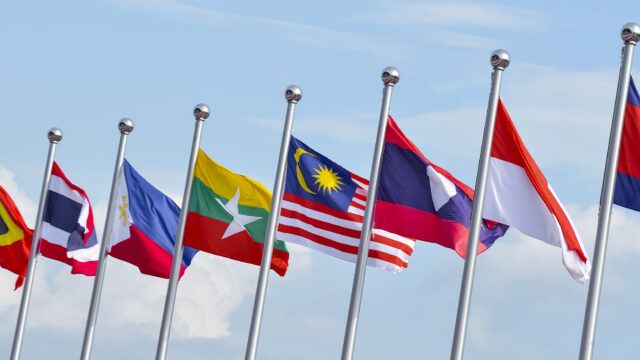Corporate bonds are sitting on sizable gains since their collapse in value in reaction to the March 2020 Covid-19 shock. High yield corporate bonds are up by over 25%, according to Schroders.
The firm expects volatility in 2022, and moderate, income-led returns. The key will be identifying opportunities for relative outperformance, particularly sectors and companies which can protect margins against rising inflation, the firm said in a research report.
The most attractive pockets of value, however, are in Asia, emerging markets (EM) and parts of high yield, Angus Hui, head of Asia and emerging market credit, said.
EM high yield spreads are “well wide” of their developed market counterparts and there is greater dispersion, with a significantly higher proportion of EM bonds trading at spreads of over 600 and even 800 basis points, Hui noted, adding that this implies a greater range of opportunities at the security level.
“Asian economies have continued to recover from the pandemic, particularly in the southeast. The region remains well placed, given its relatively low vulnerability to rising commodity prices and US policy tightening, resilient domestic growth, proactive central banks, and low reliance on external debt,” Hui said.
Asian investment grade credit valuations are supported by stable and improving fundamentals, while high yield offers abundant idiosyncratic security selection opportunities, according to Hui.
“We see opportunities in renewable energy in India, whereas in Indonesia, new issue valuations are less compelling. Some sectors in China face risks from moves to reduce borrowing and we are particularly selective toward high yield industrials,” he said.
China uncertainty
Although Asian credit spreads should stabilise in the first half of 2022, they may not converge to historical averages, at least near-term, as investors remain wary of policy risks from China.
However, Schroders forecasts “decent growth” in China this year.
The systematic risks from the Chinese property sector should stay contained as Chinese banks have little exposure, according to Hui. He expects a “bifurcation of the real estate market, and consolidation” in the sector. “Not all developers will survive, and further defaults are likely, but some distressed issuers could rebound sharply, if they can secure financing domestically or sell assets,” Hui said.
Meanwhile, China must “catch up on decarbonisation, having spent years as a growth powerhouse”, noted Saida Eggerstedt, head of sustainable credit at Schroders, which will require large scale investment across the value chain.
Green and ESG bond issuance picked up in 2021, but mainly from the property sector. “In 2022 we will also look at ESG bonds from other sectors [such as] renewables, that enable China to substitute coal for sustainable energy sources, or electric vehicle parts companies. On the social side, bonds that facilitate access to basic services will be welcomed by impact investors like us,” Eggerstedt said.

















